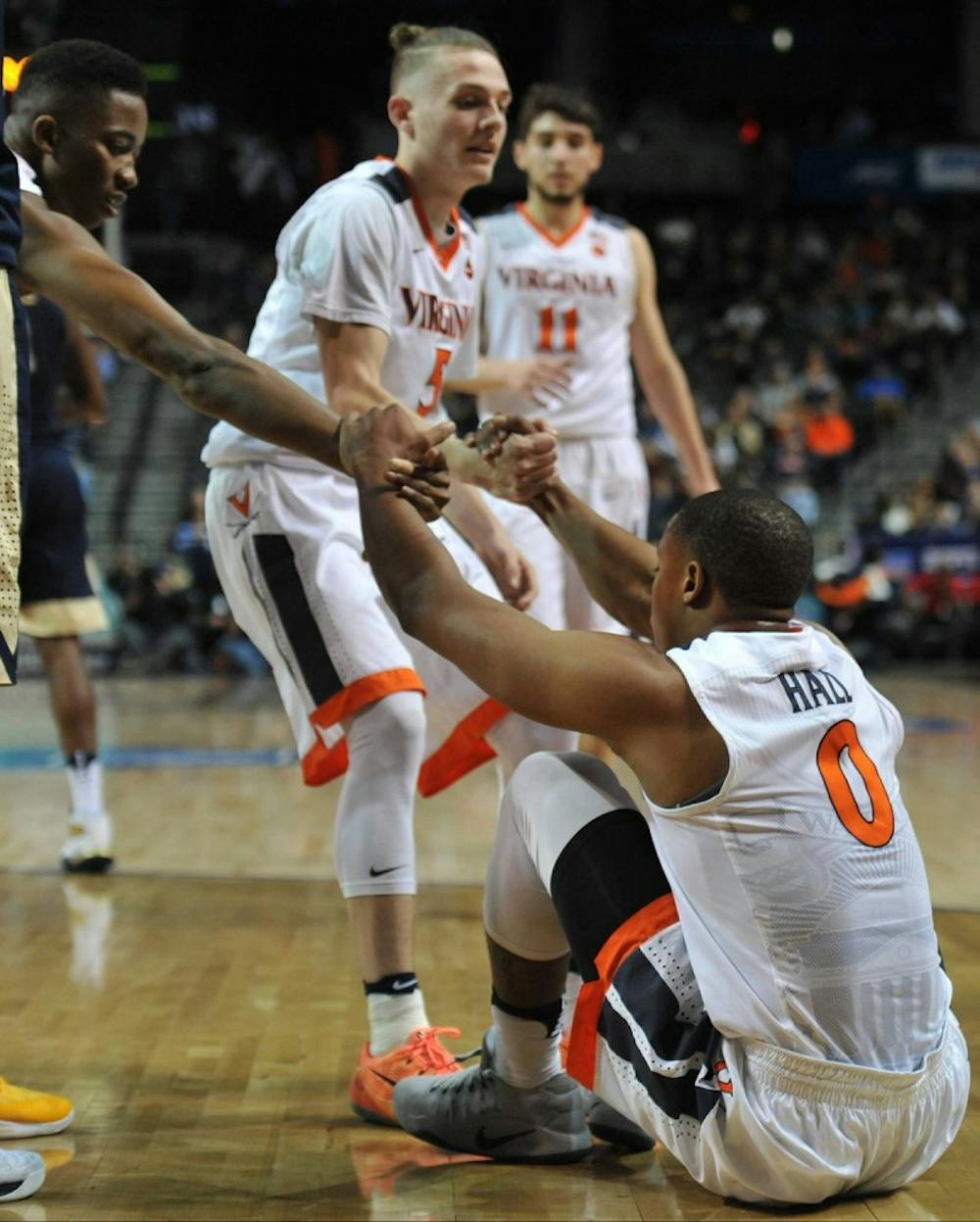According to a study by the CDC, there are an average of 16,607 injuries sustained in collegiate basketball every year, with an estimated injury rate of 8.5 per 1,000 athlete exposures to potential sources of injury.
The most common basketball injury is an ankle sprain, but hand injuries, stress fractures and overuse injuries are also common. Ankle sprains usually occur when athletes jump for a layup or dunk and come down landing on another player’s foot, rolling their ankle.
However, according to Dr. David Diduch, the head orthopaedic team physician for the University’s athletics, using taping and braces regularly can help prevent sprains or reduce their severity.
One of the most severe injuries players can sustain is a tear to the anterior cruciate ligament, or ACL.
“Probably the No. 1 injury that can be most devastating to an athlete is a torn ACL, which is a knee injury, and that happens with a change of direction movement,” Diduch said. “[The injury] requires surgery and is about a six-month rehabilitation process before people are back to sports.”
Diduch said female athletes have been found to suffer ACL injuries at a rate seven times greater than their male counterparts. While it is rare to see a single ACL injury on a men’s basketball team in a given season, it is not uncommon to see several ACL injuries at a time on women’s teams at both the collegiate and high school levels, he said.
This disparity in ACL injuries has been studied thoroughly, and differences in bone shape and knee structure are suspected to play a role.
Plyometric training — which involves exercises that emphasize jumping and landing — has been shown to decrease the rate of injury for women and is incorporated into pre-season training for both women’s basketball and soccer at the University, Diduch said.
Besides the rare yet severe ACL injuries, Dr. F. Winston Gwathmey, Jr., an assistant team physician for the men’s basketball team, said the team also sees other milder overuse injuries as the season goes on. Quadricep strains and foot and back pain are especially likely, as players play many games in a short period of time. Athletes will often play through these injuries with the use of tape, braces and anti-inflammatory medications to help them function and feel more comfortable.
Gwathmey said the overall low rate of injury on the men’s team is largely due to the work of the team’s strength and conditioning coach, Mike Curtis.
“The conditioning program we have at U.Va. [does] a great job at building the body up in such a way that it’s much more resistant to injury, so I'd give our training and conditioning coach Mike Curtis a lot of credit,” Gwathmey said. “He has a plan in place and he executes it and that’s why we're doing so well.”
Diduch also said good nutrition plays an influential role in preventing injuries like stress fractures, which are more likely to result when bones are already weakened.
Despite everything the trainers, physicians and players do to prepare for injury, sometimes injury is inevitable.
“No matter how you prepare you can't avoid some of the more traumatic injuries,” Gwathmey said. “If you hit just the right way or come down just the right way, you can always injure something, but if your body is strong and you've prepared well, you can avoid major injury.”







